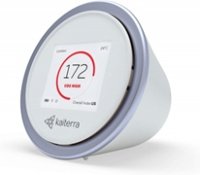Instrument Choice Experiment: How to Determine Your Soil Type and Optimise Irrigation

Different soil types have different water carrying capacities. Therefore, knowing your soil type will help you to optimise irrigation for your plants’ health.
The key to categorising your soil type is to determine its relative percentages of clay, silt and sand. This experiment demonstrates the simple way you can do this to benefit your home or work garden.
The Science Behind the Experiment
About Soil Moisture
Soil moisture is an essential factor for the growth and development of healthy plants.
If plants and crops are overwatered – even waterlogged – roots will die, and your plants suffer. They will not absorb enough oxygen and may develop root rot. On the other hand, underwatering plants will lead to excessively dry soil, plant wilting, leaf loss, slow growth, and eventually plant death.
The ideal soil moisture varies from plant-to-plant. To get it right, you need to know what level of wetness your plant variety requires - AND your soil type.
Soil Types
As we mentioned in the introduction, you categorise your soil by its relative percentages of clay, silt and sand. Figure 1 (below) elegantly summarises these classifications.

Figure 1: A soil texture triangle showing soil textures based on the percentage of sand, silt, and clay. Reference.
Different soil types have different physical properties, including differences in water infiltration, retention, and availability. Listed below are the four fundamental soil compositions. You break down these further to describe texture subtypes, which are essentially varying combinations of each main group. (See a practical application of soil texture subtypes in Figure 2 below).
Soil Type |
Characteristics |
|
Sand |
Sand has a high infiltration rate, low water retention and little chemical activity. |
|
Silt |
Silt has moderate plant water availability and a low-to-moderate water infiltration rate. Silt can compact under high traffic, which will obstruct the flow of air and water. |
|
Loam |
Loam type soils are moderately susceptible to compaction, have moderate plant water availability and infiltration rates. |
|
Clay |
Clay soils have some restrictions on water movement, which can lead to waterlogging. However, these soils have medium-to-high plant-available water. However, clay soils are highly susceptible to mechanical compaction. |
Once you know your soil composition, there are two critical values you need to know. These are its:
- Wilting Point: Where the moisture level falls below a critical point, and your plants will begin to wilt and may die.
- Field Capacity: The maximum amount of water your type of soil can hold after excess water has drained away. When the moisture level remains over its field capacity, your soil is said to be waterlogged.

Figure 2 This graph shows the field capacity and wilting points of various texture classes of soil.
The Experiment
So let us show you how you can discover what soil type you have in your garden.
Materials Used
- Two clear containers
- Water
- Stirring stick
- Ruler
- Shovel
Method
- Use a shovel to collect a soil sample. Fill the clear container to about halfway. For this experiment, we have taken one sample from a home garden and one from the work garden.
- Fill the jar with water to just over ¾ full. Don’t be too precise, so long as the soil is well covered.
- Stir the slurry thoroughly.
- Set your sample aside and leave it to settle for a few hours.
- After a few hours, the soil will have separated. Measure each of the three clear levels (sand, clay, and silt) with a ruler, then convert your measurements into percentages. Finally, use the soil texture triangle (Figure 1) to determine your soil type.
Results and Discussion
Figure 3 This image shows the home and work soil jars having separated into their sand, silt, and clay components.
Jar 1 has clearly defined lines of soil components. Jar 2 is a bit more difficult to determine.
Figure 4 This image shows the home (2) and work (1) soil jars having separated into their sand, silt, and clay components with measurements
As you can see in Figure 4, the sand particles are the largest and heaviest, so they have settled at the jars' lowest level. Silt particles are slightly smaller and weigh less than sand. They occupy the layer above the sand. As clay particles are the smallest, you’ll find them at the top of the three soil particle layers - unless your soil is very thick with clay – in which case you might find some large lumps sitting on the bottom of your jar(s).
Layered immediately above the soil components, you can observe water and rotted organic material. At the very top of the mix are floating organic particles yet to rot. Ignore the layers above the sand, silt and clay; they are not relevant for classification purposes.
Now, we can determine our soil types:
Jar 1 Work Soil Sample: Sand 54% Silt 32%, Clay 14%. Referring back to figure 1, we can classify this work garden soil sample as Sandy Loam.
Jar 2 Home Soil Sample: Sand 86% Silt 9%, Clay 5%. Again, referring back to figure 1, we can deduce that the home garden's soil must be Loamy Sand.
The home garden soil had a higher sand content than the work garden. By referring to Figure 2 (above), we can predict that the home garden will retain the least amount of water, but you can easily replenish its moisture content. The Sandy Loam soil of the work garden will retain water slightly better than our home garden.
Conclusion
If you want healthy plant growth, you’ll need to optimise your garden's irrigation; but first, you must determine the soil structure and deduce your soil type.
For more information on this experiment and soil moisture meters, speak with an Instrument Choice Scientist: Call 1300 737 871 or email [email protected].
Also interesting
The IC-EC20 conductivity meter is a durable instrument offering two-point calibration, automatic temperature compensation and automatic range adjustment. This unit is a popular choice for measuring conductivity in tap drinking water, swimming pools, water treatment plants, hydroponic operations, and various educational applications.
The IC-EC20 Pocket Conductivity kit includes a meter and everything you could need to calibrate and take straightforward conductivity measurements.
Learn how to calibrate and take a measurement with the EC20 conductivity kit

If the air in your home or office seems stale or stuffy, if you feel drowsy or have difficulty concentrating be careful - the culprit may be elevated Carbon Dioxide concentrations!
Carbon dioxide forms as a byproduct of our metabolism and gets expelled from our bodies when we breathe. As winter approaches and the weather cools, we will spend less time with open windows and doors. Inadequate ventilation leads to higher concentrations of CO2.


